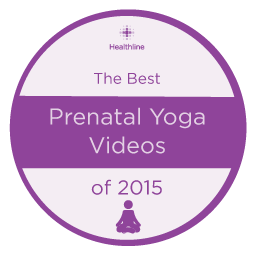Now that spring has sprung and all that rain is just a memory, it’s time to get outside in the beautiful sunshine. That Vitamin D is so good for you, but it comes with the dangers of the sun. So you probably have questions about the sun and sunscreen and babies and children:
- Is it safe to bring my newborn into the sun?
- Is it safe to use sunscreen on my baby?
- What kind of sunscreen is safe for my child?
- What kind of sunscreen is safe for the environment?
THE BEST WAY TO PROTECT MY BABY FROM THE SUN
First, if you have a baby, the best way to protect your baby from the sun is by using shade and clothing, not sunscreen, the Skin Cancer Foundation,” recommends waiting until the baby is 6 months old before introducing sunscreen. The best ways to keep infants sun safe are with shade and clothing.” But if you have an infant who is less than 6 months old and there is no shade and not enough protective clothing, then by all means, Healthykids.org says to apply sunscreen to your infant’s skin.
START WITH A HAT

Other than shade, the best way to protect your baby is with clothing. Begin with a hat when your baby is very young so he gets used to wearing a hat as he gets older. Don’t wait to introduce a hat till he can reach up and pull it off – because he will! The best hat will have a non-choke tie under the chin and a wide brim. I like a hat with a flap on the back of the hat to protect the skin on the neck too.
SUN PROTECTIVE CLOTHING
Sun protection is important for the sensitive skin of babies and children. Some recommended types of sun-protective clothing for babies include the Coolibar UPF 50+ Baby Beach One-Piece Swimsuit and i play. Breatheasy Sun Protection Shirt, both available on Amazon. It is also important to dress babies in lightweight sun-protective clothing that covers their arms and legs and to always protect their head, face, ears, and neck with a wide-brimmed hat. Stroller shades and umbrellas can also be used for added protection from the sun.

It’s easy for parents to think about protecting their kids from the sun and then forget about it. But sunscreen is one of those things that we can’t skimp on because it protects our children from skin cancer—and also keeps them from getting burned. So yes, you should apply sunscreen to your baby, especially when there is no shade to be found! Here are some tips for making sure you do it safely:
Yes, you can put sunscreen on your baby.
Yes, you can put sunscreen on your baby. Baby skin is more sensitive than adult skin and needs extra protection from the sun’s harmful rays. Make sure to choose a sunscreen that offers broad-spectrum protection (that means it protects against both UVA and UVB rays) with an SPF of at least 30. The American Academy of Pediatrics recommends using an SPF of at least 50 for babies over 6 months old who are spending time outdoors in direct sunlight.
Make sure that any product you use on your child has been tested by Consumer Reports or another independent testing organization before buying it; this will help ensure that it meets their standards for effectiveness and safety. A good rule of thumb when picking out a sunscreen: if it doesn’t say anything about being formulated specifically for babies (and even kids), then skip it–you don’t want something too heavy or greasy since this could irritate their skin further!
You should use sunscreen with an SPF of at least 30 that protects against both UVA and UVB rays.
You should use sunscreen with an SPF of at least 30 that protects against both UVA and UVB rays. Sunscreens that protect against UVA are labeled “broad spectrum.” If you’re not sure if your current sunscreen is a broad spectrum or not, check the ingredients list on the bottle or tube to see if it contains one of these active ingredients:
- Avobenzone (also called Parsol 1789),
- Ecamsule (also called Mexoryl SX),
- Titanium dioxide or zinc oxide.
Make sure the sunscreen is water-resistant and broad spectrum.
- Look for water-resistant sunscreen.
- Make sure you’re using a broad-spectrum sunscreen, which protects against both UVA and UVB rays.
- If you’re going to be spending time in the sun, you may want to look into alternatives to sunscreen such as clothing with SPF or hats with brims that shade your child’s face from the sun’s rays.
How Much Sunscreen is Enough?
Apply a liberal amount of sunscreen (about 2+ tablespoons) to all exposed areas of the body 30 minutes before going outside, and reapply every two hours or after swimming or sweating heavily. You should use enough sunscreen on your baby’s skin so that it feels like you have a thin layer on your child’s skin with no white residue left behind when rubbing it in–just like you would apply moisturizer!
CLOUDY DAY? YOU STILL NEED SUNSCREEN
You should apply sunscreen to all exposed skin, including:
- Ears,
- Nose,
- Lips,
- Feet.
- Each finger and toe,
- The top of their feet
- Shoulders.
- Baby’s hairline too.
- Around the eyes. But be careful around the eyes. You don’t want the baby to rub her eyes and spread the sunscreen into the eyes. That’s where a good SPF hat comes in.
For babies younger than 6 months when necessary: Use a water-resistant sunscreen with an SPF rating of 30 or higher every day you’re out in the sun (even on cloudy days).
For children older than 6 months: Use a water-resistant/sweatproof SPF 30+ broad-spectrum sunscreen every day when you’re out in the sun (even on cloudy days).
You can give your baby the gift of sun protection by following these tips from the American Academy of Pediatrics:
- Sunscreen is the best way to protect your baby’s skin from the sun.
- Use sunscreen with minimum SPF 30+ and broad spectrum protection.
- Apply sunscreen liberally (about 1 ounce or 2 tablespoons each) to all exposed areas of the body 30 minutes before going outside, and
- Reapply every two hours or after swimming or sweating heavily.
- Use enough so that it feels like you have a thin layer on your child’s skin with no white residue left behind when rubbing it in–just like you would apply moisturizer!
- Children under 6 months old shouldn’t use any type of sunscreen products but when there is no shade, sunscreen, and clothing should be used to protect your baby’s skin from the rays of the sun.
- Babies of all ages should wear hats with brims that shade their faces when possible.
What Sunscreen is Safe for the Environment?
There are several environmentally safe sunscreens available:
- Biodegradable sunscreens, also known as “reef-safe” or “coral-safe” sunscreens, offer protection from UV rays without most of the chemical ingredients often found in regular sunscreens, making them eco-friendly and safe for the environment as they will not damage plant or animal life as they wash off your skin in the water.[1]
- Additionally, there are many eco-friendly sunscreen options that are formulated with natural ingredients and come in environmentally friendly packaging.
- Some of the best eco-friendly sunscreen brands include Solara Suncare, Raw Elements, and Eir NYC.[2][3][4]
- It is important to note that sunscreen alone is not enough to protect oneself from the sun’s UV rays, and additional measures such as wearing protective clothing and seeking shade are also recommended.[2]
Sources:
https://www.verywellhealth.com/biodegradable-sunscreen-who-needs-it-514395
https://www.ewg.org/sunscreen/
https://thenewknew.com/best-eco-friendly-sunscreens/
https://www.sustainablejungle.com/zero-waste/zero-waste-sunscreen/











